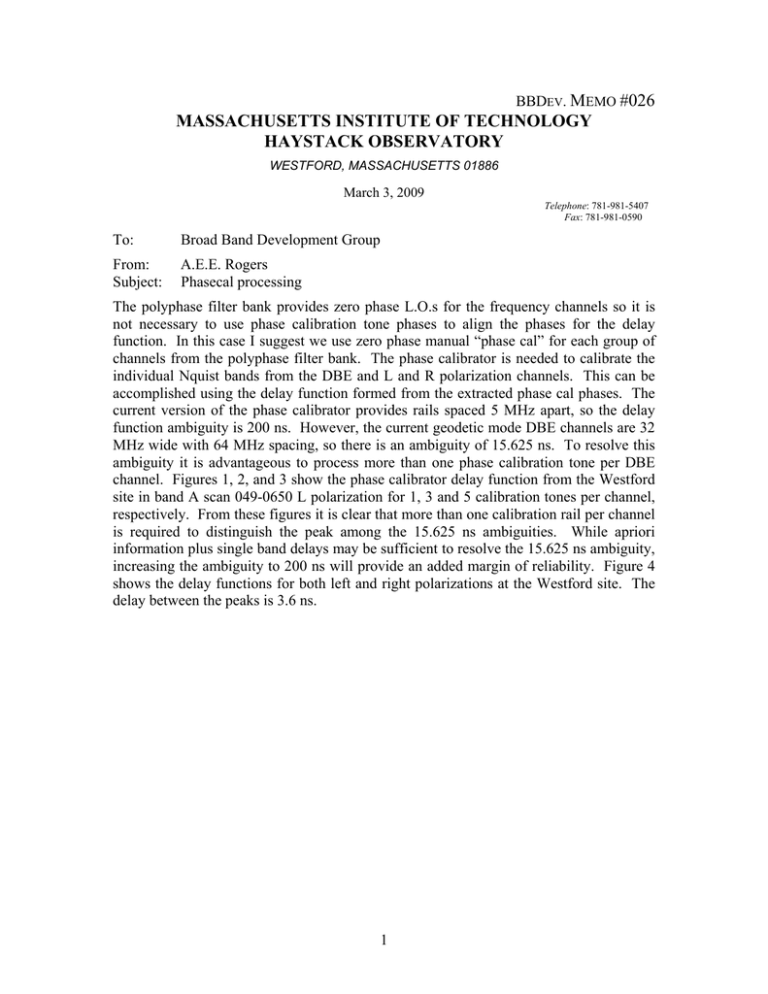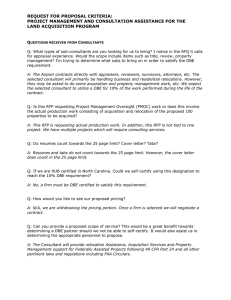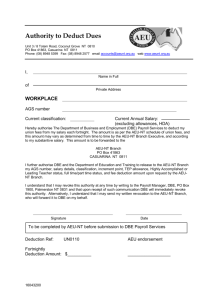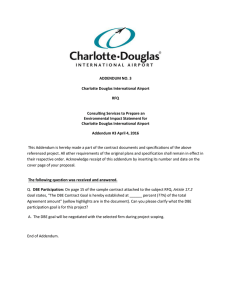M #026 MASSACHUSETTS INSTITUTE OF TECHNOLOGY HAYSTACK OBSERVATORY
advertisement

BBDEV. MEMO #026 MASSACHUSETTS INSTITUTE OF TECHNOLOGY HAYSTACK OBSERVATORY WESTFORD, MASSACHUSETTS 01886 March 3, 2009 Telephone: 781-981-5407 Fax: 781-981-0590 To: Broad Band Development Group From: Subject: A.E.E. Rogers Phasecal processing The polyphase filter bank provides zero phase L.O.s for the frequency channels so it is not necessary to use phase calibration tone phases to align the phases for the delay function. In this case I suggest we use zero phase manual “phase cal” for each group of channels from the polyphase filter bank. The phase calibrator is needed to calibrate the individual Nquist bands from the DBE and L and R polarization channels. This can be accomplished using the delay function formed from the extracted phase cal phases. The current version of the phase calibrator provides rails spaced 5 MHz apart, so the delay function ambiguity is 200 ns. However, the current geodetic mode DBE channels are 32 MHz wide with 64 MHz spacing, so there is an ambiguity of 15.625 ns. To resolve this ambiguity it is advantageous to process more than one phase calibration tone per DBE channel. Figures 1, 2, and 3 show the phase calibrator delay function from the Westford site in band A scan 049-0650 L polarization for 1, 3 and 5 calibration tones per channel, respectively. From these figures it is clear that more than one calibration rail per channel is required to distinguish the peak among the 15.625 ns ambiguities. While apriori information plus single band delays may be sufficient to resolve the 15.625 ns ambiguity, increasing the ambiguity to 200 ns will provide an added margin of reliability. Figure 4 shows the delay functions for both left and right polarizations at the Westford site. The delay between the peaks is 3.6 ns. 1 Figure 1. Delay function using one phasecal rail from each of the 8 DBE channels. Figure 2. Delay function using three phasecal rails from each of the 8 DBE channels. 2 Figure 3. Delay function using five phasecal rails from each of the 8 DBE channels. Figure 4 Delay function for the L polarization in red and the R polarization in black. The difference of 3.6 ns is free of the 15.625 ns ambiguity when 5 frequency rails are used in each channel. 3






